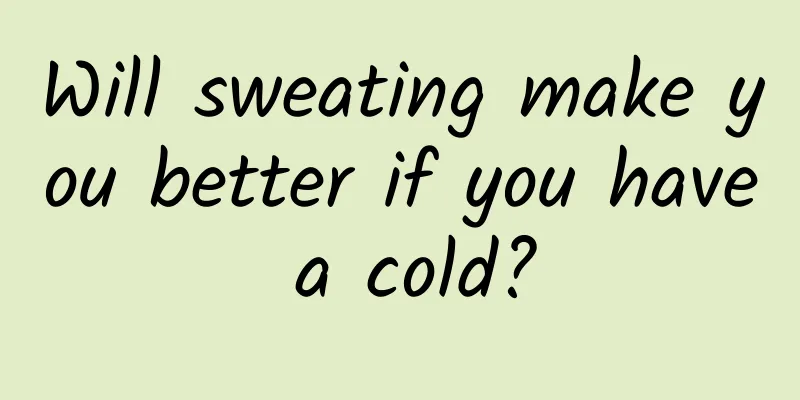Symptoms of whooping cough in babies

|
Whooping cough is a common disease in infants. Although the coughing phenomenon is not particularly typical, it is still very harmful to children if they are not treated and nursed back to health using formal methods. It can easily cause the child's heart rate to increase and cause shortness of breath. In serious cases, if artificial respiration or oxygen is not performed in time, it can even induce suffocation. Symptoms of whooping cough in babies 1. It usually takes about 1 to 2 weeks from the onset of the disease to the onset of spasmodic cough. The initial symptoms are similar to those of a cold. In addition to coughing, there may be runny nose, sneezing, and mild fever. There may also be only a dry cough that does not attract attention. When other symptoms gradually disappear, the cough becomes worse, becoming lighter during the day and heavier at night, gradually turning into a spasmodic cough. 2. The 2nd to 6th week is the spasmodic cough stage, with paroxysmal and spasmodic cough as the main symptoms. During an attack, there are frequent and uninterrupted short coughs of more than ten or dozens of times as exhalation, and finally a deep inhalation. Because the throat is still in spasm at this time, it is accompanied by a high-pitched cock-like roar, and then the next spasmodic cough occurs. This attack is repeated many times until thick sputum is coughed up. When the cough is severe, there may be symptoms such as incontinence of stool and urine, flushed face and ears, tears and mucus, cyanosis of lips, etc., which will end after vomiting. 3. There is blood stasis during intermittent spasmodic coughing, and swelling of the face and eyelids is common. When the coughing is severe, epistaxis, hemoptysis, subconjunctival hemorrhage, and even intracranial hemorrhage may occur. Frequent spasmodic coughing can easily affect sleep, causing the child to feel tired, inactive, and have a loss of appetite. Coupled with vomiting and secondary infection, this can lead to nutritional disorders. How to care for whooping cough Babies with whooping cough are already feeling very uncomfortable. In addition to taking their babies to see a doctor for treatment, mothers should also provide appropriate care for their babies in daily life to alleviate their discomfort. Let’s learn how to care for a baby with whooping cough. 1. Strictly implement respiratory isolation for sick babies. The isolation period starts from the onset of illness and lasts for 7 weeks; or starts from the onset of spasmodic cough and lasts for 4 weeks. Adult patients should be careful to avoid contact with children. 2. The air in the sick child's room should be kept fresh, but the baby should be prevented from catching a cold. 3. Wash and dry baby’s clothes and bedding frequently to keep them clean. 4. Pay attention to dietary adjustments to ensure the daily supply of calories, fluids, vitamins and other nutrients. Especially children whose coughing and vomiting affect their eating. The diet should emphasize nutrition, small meals and frequent meals, and at the same time, the physical fitness of the child should be strengthened. 5. The child should stay in bed to rest, maintain a good mood, and stop crying. For children whose frequent coughing at night affects their sleep, sedatives may be given as appropriate. 6. Expect phlegm in time to prevent respiratory apnea. Some drugs that can dilute sputum can be given to make it easier to cough up, but this method is not suitable for people with severe cough reactions or small infants. In case of severe sputum obstruction, a suction device should be used to suck out the secretions. 7. When respiratory apnea, cyanosis, hypoxia, or convulsion occurs, artificial respiration (using a ventilator if conditions permit), oxygen inhalation, and suction of sputum should be given. Anticonvulsants should be used in case of convulsions. |
<<: Symptoms of baby allergy to mango
>>: Symptoms of excessive bile secretion
Recommend
What causes facial paralysis? How to treat it?
Facial paralysis is a disease caused by facial ner...
Why do I sweat when I sleep?
Sweating while sleeping is quite common in our da...
Stomach pain and black loose stools
Feces are the excretion of the human body, that i...
Skin allergy yellow discharge
The human skin is actually quite fragile. Althoug...
Symptoms of Tetany
Hand and foot convulsion is a disease caused by m...
What to do if corneal perforation occurs
Everyone is familiar with the cornea. Once it is ...
What to do if a child has toothache and swollen face
Children's resistance is not as strong as tha...
Symptoms of paronychia, have you been infected?
Paronychia can also be considered a skin disease....
Don’t do it at 4 in the morning and don’t do it at 5 in the evening! Men and women must watch
Health and longevity are what modern people desir...
The benefits of men standing on tiptoe frequently
For men, this simple activity of standing on tipt...
Can Matsutake be used to make wine?
Matsutake is a very popular food ingredient, and ...
Why does lower back pain occur after moxibustion?
Moxibustion is a relatively traditional treatment...
Symptoms of a stroke
"Stroke" is just two simple words, but ...
Is it good for a six-month-old baby to sleep on his side?
Regarding the issue of children's sleeping po...
What is the edible value of blood vine
Sargassum spatholobi is a medicinal material with...









